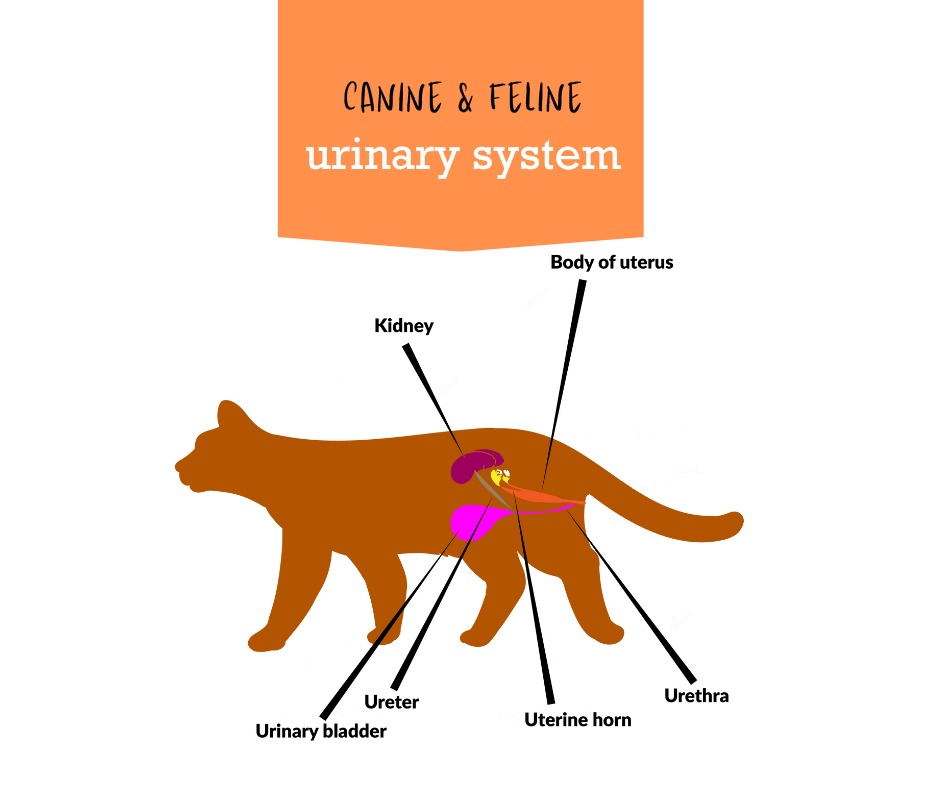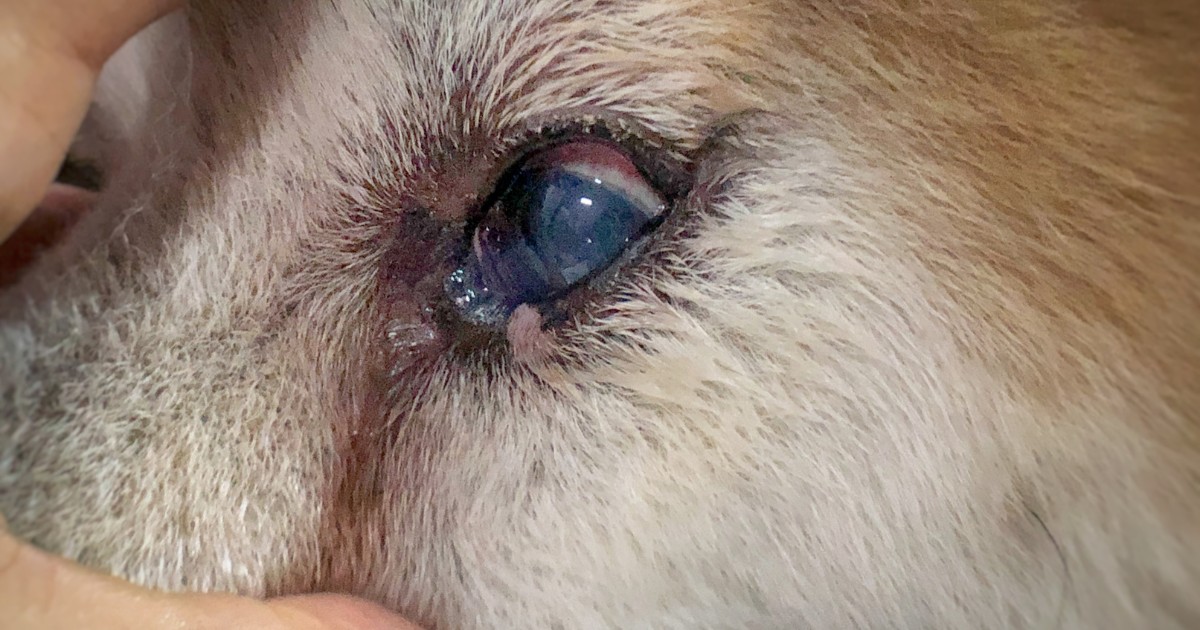My dog is shaking her head and pawing at her ears. She flinches when I touch her head. Ear infections in dogs and cats are one of the most prevalent complaints veterinarians see in their patients, and they are often recurring. Read more about the primary and secondary causes of ear infections, the symptoms, how they are diagnosed and how thEar infections in dogs and catsYou may notice a foul odour emanating from your dog or cat’s ears, or maybe the pinnae (ear flaps) are red and warm, or you can see a dark discharge (or pus) or inflamed ear canal. However, it would be your pet’s behaviour that alerted you to the potential problem to begin with: persistent scratching, head-shaking, pawing at their ears and/or vocalising while rubbing their ears. They may flinch when being touched on the head or even avoid your touch altogether. |
My dog's skin is inflamed and itchy, and he won't stop scratching himself Up to 15% of dogs are affected by atopic dermatitis, in which an environmental allergen/s triggers a persistent itch. Self-mutilation and secondary infection are usually what send pet owners to the vet looking for answers. Here’s what pet owners can leaMost dogs will sit on their rump and have a scratch behind their ears or relieve an itch on the trunk of their body. They will then stand up, shake off, and continue on with their day. A dog with atopic dermatitis will spend the majority of their waking hours scratching themselves, nibbling on their paws, licking their skin, and/or rubbing their face. |
A guide to diabetes mellitus in dogs and cats We answer your questions about the symptoms, diagnosis, treatment and management of diabetes in dogs and cats.Dogs’ and cats’ endocrine systems work very similarly to humans’, and they experience similar disorders of the endocrine organs as humans do. This includes diabetes mellitus. Diabetes originates and presents in different ways between dogs and cats, but the mechanism is the same: the body is unable to use the glucose in the bloodstream. This occurs because either the pancreas does not produce enough insulin or the body is resistant to insulin secretion. |
All you wanted to know about senior pet care We answer your questions about caring for senior petsTime flies when you’re having fun – especially with a beloved dog or cat. Pets make our long days not only bearable, but worthwhile, and sharing affection with a pet helps us return to the moment when we’re anxious or overwhelmed. The only problem with pets is that they too get old, slow down, require additional special care, and a different approach to their health and wellbeing. |
YOU are your pet’s best bet for successful treatment What happens when the vet cannot cure your pet? In this article, we address the responsibility of the vet and the pet owner; what makes diagnosis and treatment possible and what makes it difficult; and what to do when the vet doesn’t have all the answerAs a pet owner, the veterinary clinic or animal hospital is your first port of call when your pet is showing concerning symptoms, and you are seeking a diagnosis and an effective treatment plan. The veterinarian’s main objective is to ensure your pet receives quality care that restores and even improves their health and wellbeing. We love animals and we want to see them well again – as much as you do. |
The canine and feline urinary system In this article, we list the organs and functions of the canine and feline urinary system, the disorders that can affect the urinary system, and how the vet diagnoses your pet's urinary health.The primary function of the canine and feline urinary system is to excrete waste products from the body. Therefore, the health of the urinary system is critical for the health of all of the body’s other systems. Understanding and maintaining your pet’s urinary system is essential to their overall health. In this article, we’ll cover the organs and functions of the urinary system, as well as the common diseases of the urinary system (and their symptoms) and how the vet can diagnose them. |
Mange in cats My cat is scratching relentlessly and has begun to lose patches of fur. She looks pretty unhappy. What can I do?What is mange?Mange is a skin condition that develops when there is an infestation of parasitic mites or an overpopulation of mites on or in a cat’s skin. The presence of these mites, some of which burrow into your cat’s skin, causes itching, redness, and other uncomfortable symptoms. As with dog mange, cats can suffer from different types of mange based on the types of mites present on their skin. In this article we explore the different types of mange that cats can get, how the different types of mange are diagnosed and what can be done to treat the mange. |
Mange in dogs My young dog's fur is falling out - it started on her face and around her eyes. She's not scratching a lot, but is feeling under the weather. What could it be?What is mange?Mange is a skin condition in pets caused by an overpopulation or infestation of parasitic mites. The mites burrow into an animal’s skin (sarcoptic) or over-populate the hair follicles (demodex), causing either itchiness and thickened skin, or skin changes and hair fall. There are different types of mange caused by different species of microscopic mites – the most common being demodectic mange and sarcoptic mange. In this article, we’ll explore the symptoms of mange, how the different types of mange are diagnosed and treated, and whether mange is contagious to humans. |
Uveitis My dog's eye looks a bit cloudy and appears to be shrunken. Sometimes he behaves like he can't see properly.Uveitis – pronounced ‘yoo-vee-i-tis’ – refers to inflammation inside the eye. The disease can occur in dogs and cats of any age and breed. Patients with uveitis will show signs of pain, redness and cloudiness of the eye. There are many potential causes and sometimes the cause is never found. Prompt treatment is necessary to avoid severe long-term consequences; even blindness. In this article we will discuss the possible causes, symptoms, diagnosis and treatment of uveitis in pets. |
Adverse Food Reaction in Pets My pet eats a premium pet food, but they are getting sick. Help!As logic would go, feeding your dog or cat a high-quality, premium pet food would ensure their nutritional needs are met and they would thrive and live a long and healthy life. This is every pet owner’s objective for their beloved pet. However, some pets – both dogs and cats – can experience what is called an adverse food reaction. In this article, we’ll explore what adverse food reactions are, what causes them, when to take your pet to the vet, and how adverse food reactions are diagnosed and treated. |